#Cinnabar Mineral
Text
Cinnabar is a bright red mineral consisting primarily of mercuric sulfide. It is the principal ore from which mercury is extracted. Its vibrant red color has also made it a popular pigment throughout history. Read more here:
73 notes
·
View notes
Note
What rock would you want to eat if you could? I would want to eat Pyrite and hoped it tasted like raw gold foil chocolate coins
It's hard to say, they all look so tasty! As many said already, a lot of rocks and minerals look like candy so honestly I'd like to eat them all!
If I have to say specifics I'd say Coffinite bc it looks like a crunchy chocolate cookie. Chalcanthite also just looks like some very silly candy. Cinnabar is just hard candy to me, same to Galena. Orpiment bc yellow and also again, looks like candy. Malachite is just so pretty I wanna put it in my mouth!
#I don't think I need to say don't eat these yeah?#Here's why:#Coffinite: Radiation poisoning (Uranium Ore)#Chalcanthite and Malachite: Copper Poisoning#Cinnabar: Mercury Poisoning#Galena: Lead Poisoning#Orpiment: Arsenic Poisoning#geology#rocks#cool rocks#minerals#crystals
24 notes
·
View notes
Text
Just wrote, like... a couple sentences (read: actually a bunch but I refuse to give myself credit) for a rain code oc summary i don't know if i'll ever finish but I feel like I cracked the code in my monkey brain somehow lol. Turns out writings easier if I divide it into sections, use a script, different color highlights, switch up formatting every now and then etcetera. I feel so powerful. Anyway here's an excerpt that doesn't spoil too much lmao
_________________________________________
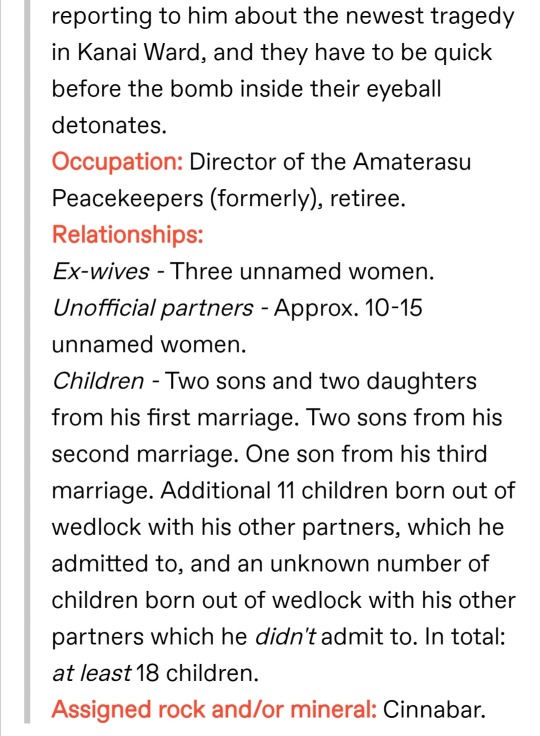
#mine#the growler is making progress!!#Also yes i do assign rocks/minerals to nearly every character from any media... I jsut can't help it man... I'm quirku like that....#I like.... rocks.... do you know how much gemstones and other funky fellows i currently own... a lot....#some of those are literal poison containing deadly amounts of copper.... but it's not like im eating it so its fine....#*says with suspicious chalcanthite shaped crumbs on my mouth*#by the way cinnabar fun fact: it contains mercury. just so you know the guy assigned that is a toxic fuck <3#it's ok i love him. he has a funny moustache and magnificent eyebrows so that makes up for the trauma he inflicted on everybody he met
2 notes
·
View notes
Text
i know i give out free renaming scrolls to people who buy my level 25 dragons. but if anyone renames cochineal i’m gonna blow this whole building up
#she's a xxx vermillion with faceted eyes#so i named her after those tiny bugs they use to make natural red dye#and her brother is named cinnabar after the mineral used to make vermillion pigment#feeling so galaxy brained#fr#(warning if you click the link she has the keel gene)
6 notes
·
View notes
Text


Gem show time! Got a couple of new things: cinnabar on dolomite (there was a prettier specimen but 2x the price and with this one it's easier to not touch the cinnabar) and platinum.
#i was so tempted by a large piece of native gold but thankfully it wasn't for sale yet#i have a few vids where i got to use my geiger counter on tobernite and uraninite but I don't think I can directly upload them here#the tobernite got up to 40000 CPM 🔥#i am not brave enough to buy anything hot like that but it was a pretty green#mineral collection#rock collection#cinnabar#dolomite#platinum#beeapartments-text
1 note
·
View note
Text
Sulfur is encountered most often in sulfide minerals such as pyrite, FeS2, molybdenite, MoS2, chalcocite, Cu2S, cinnabar, HgS, and galena, PbS.
"Chemistry" 2e - Blackman, A., Bottle, S., Schmid, S., Mocerino, M., Wille, U.
#book quote#chemistry#nonfiction#textbook#sulfur#sulfide#minerals#pyrite#fools gold#iron disulfide#iron#molybdenite#molybdenum disulfide#molybdenum#chalcocite#copper sulfide#copper#cinnabar#mercury sulfide#mercury#galena#lead sulfide#lead
0 notes
Text
Prehistoric Figurine of a Harp Player, from the Cyclades (Greece), c. 2700-2300 BCE: this figurine was shaped from a block of solid marble and then slowly sanded into form using pumice and emery

The figurine depicts a musician with a frame harp, an instrument that originated in the Near East and then later spread to the peoples of the Aegean. A sound box forms the section along the base of the instrument, and a small protrusion can be seen near the top of the harp's frame; some experts have argued that this protrusion might represent an ornamental carving of a waterfowl's head, while others argue that it represents a musical extension that facilitates the projection of sound (a feature that often appears on the stringed instruments of the ancient Near East).
This piece measures 35.8cm (about 14 inches) tall.
Musical performances like this are rarely depicted in Cycladic artwork. Depictions of male characters are similarly rare, representing only 5% of the Cycladic sculptures that are known to exist. When male figures are depicted, however, they are frequently shown playing musical instruments, as seen here.

Figurine of a Harpist, c. 2800-2700 BCE: a similar example of a Cycladic sculpture that features a musician with a frame harp
The Museum of Cycladic Art provides a more detailed explanation of the process by which these figures were created:
As we can deduce from the few unfinished figurines that have been discovered so far, the first step in the process was to roughly shape the raw piece of marble into a figure by the impact of a mallet. Emery powder was then used to abrade the surface until it obtained the desired shape and size. Once the desired shape was achieved, the surface was smoothed carefully before the fine work of carving the details started. At the end, the figurine was polished to a high degree that is still amazing.
And according to The Met:
Many of these figures, especially those of the Spedos type, display a remarkable consistency in form and proportion that suggests they were planned with a compass. Scientific analysis has shown that the surface of the marble was painted with mineral-based pigments—azurite for blue and iron ores, or cinnabar for red.
The Cycladic Islands (also known as the Cyclades) are a group of about 30 separate islands in the Southwest Aegean, off the coast of mainland Greece. These islands contain a wealth of natural resources, including marble, emery, pumice, obsidian, and an assortment of precious metals. The prehistoric peoples of the Cyclades made use of these resources for many different purposes, but the marble figurines/sculptures that they crafted during the Bronze Age are perhaps their most famous creation.
The vast majority of these figurines are stylized depictions of the female form. The cultural significance of the sculptures remains unclear; they may have simply been created as decorative pieces/artwork, without any additional function, or they may have been used as fetishes, totems, religious idols, grave goods, or votive offerings.
Sources & More Info:
The Getty Museum: Figurine of a Harp Player
The Met: Cycladic Harp Player
The Met: Early Cycladic Art and Culture
The Museum of Cycladic Art: Techniques
#archaeology#history#artifact#ancient history#prehistoric art#art#sculpture#music#greece#cycladic#bronze age#anthropology#harp
1K notes
·
View notes
Text

Drew these two guys, but gave them some personal touches! I made phos a bit more yellowed and have some chunkier arms and made cinnabar look a bit more like they live in a cave. I feel like a soft mineral who lives in a cave all alone and miserable would get a bit scratched up after a while, you know?
318 notes
·
View notes
Text
Touhou Project theory: the Scarlet Devil Mansion's heavy metal poisoning
something an intro idk how to do this
WARNING! LONG POST AHEAD!
Potential sources of heavy metal toxins
If we look inside the mansion there's a lot of red carpet. One pigment for red is vermilion, which which is derived from the mercury mineral cinnabar which is highly toxic. Vermilion was a highly valued and prestigious dye historically, befitting of an aristocrat's mansion. Another detail is in one of these screenshots the carpet is a rather dark red, and while many red pigments slowly turn pink as they fade vermilion actually darkens and turns brown (similar to blood), which you can see in the painting below. This could be a lighting effect, though.
Another possible pigment is minium, which is derived from lead and is also toxic.



We also see a fair amount of white in the mansion, on the table cloth in the above image and many of the residents' clothing such as Sakuya's apron and Flandre's mob cap. One historical pigment for white is lead white, which is also derived from lead. Lead white was also used in cosmetics to whiten skin, for another potential source of poisoning.
Another potential source is lead from pewter. Given Remilia's weakness to silver she is not likely to use sterling silver for metal objects such as tableware and tea sets. Pewter, a broad term for various tin alloys, is a popular alternative she might use. However, many older pewter alloys contained large amounts of lead as its toxicity was not understood. For a long time lead was actually used in toys since it was cheap and not understood.
There's also a possibility of toxins leaching into food or drink through glass or the enamel of pottery. Lead-crystal glass slowing leaches lead into drink and if Remilia happened to buy any Uranium glass, which became popular during the mid 19th century, and peaked between 1880 to 1920, that would leach uranium. If any pottery uses toxic materials in the enamel that is another source of poisoning.
Potential victims
Sakuya Izayoi and Patchouli Knowledge are the two most human residents of the Scarlet Devil Mansion. Both display symptoms of heavy metal poisoning.
Patchouli is stated to have anemia and weak muscles. Both of these can occur from lead poisoning, though anemia typically takes a very large dose.

Sakuya Izayoi is described as "spacey", which is defined by the Merriam-webster dictionary as a synonym of spaced-out which means "dazed or stupefied by or as if by a narcotic substance,". Given how both mercury and lead mostly affect the nervous system, and both can cause memory impairment, tremors and incoordination, it makes sense that someone suffering from heavy metal poisoning might be compared to someone who is drunk or high.
For more definitive proof that Sakuya has mental difficulties, we should look at the fact that Sakuya does not know what oxygen is. While one might assume that this is just because she lives isolated from the modern world, Oxygen was first isolated before 1604 by Michael Sendivogius, and given a name and recognized as an element in 1777. Oxygen could be an important discovery for her position considering its role in food preservation. Sakuya has had over two centuries to learn that oxygen exists. Keep in mind that she lives with Patchouli Knowledge, a professional scholar, who may have been residing in the mansion for nearly a century. This could suggest serious memory and learning issues, symptoms of both lead and mercury poisoning.
While Sakuya does not display the the delayed reactions or loss of coordination associated with lead and mercury poisoning, her powers over time may prevent this. If she trips and drops something, which might normally cause someone to notice her decreasing coordination, she can just stop time and undo it.
Another interesting, though flawed, possibility is that the fairy maids have heavy metal poisoning as well. The fairy maids are stated numerous times to be bad at their jobs, spending most of their work hours only able to maintain themselves, but were still hired by Sakuya and continue to be employed by Remilia. With symptoms of anemia, weakness, memory loss, pain, lack of coordination and more it's easy to see how lead and/or mercury poisoning could make a maid bad at their job. Fairies in Touhou Project are often compared to children who are especially susceptible to lead poisoning. The fairy maids would probably slowly improve at their jobs since first being hired, and plateau and slowly decrease as increasing heavy metal levels in their blood poison them and affect their work. Perhaps Remilia and Sakuya see this happen with all the maids and assume it's just how maids or fairies work.
While one might object and that youkai would not be affected by human medical conditions like lead or mercury poisoning, there is a tiny bit of precedent for this. There's an exchange in Touhou 19 where Sanae recommends that Mamizou stop smoking so much: "I don't suppose that smoking too much is good for you. Nor is drinking." This, if admittedly stretched, suggests that certain things that are unhealthy for humans may be unhealthy for certain youkai and similar beings as well. Youkai are also affected by alcohol as well and get drunk. While this might be because of the idea that drinking makes you drunk, is it possible that if knowledge of lead and mercury poisoning spread to the humans of Gensokyo, and they started believing that lead makes you sick, that belief might cause certain youkai and related beings to get sick as well?
Problems with this theory
Neither Patchouli nor Sakuya show certain physical symptoms of mercury poisoning: Skin discolouration (usually reddening), hair loss, or peeling of the skin. Let's compare some artwork from Touhou 6:

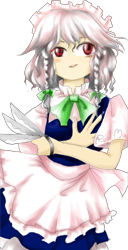

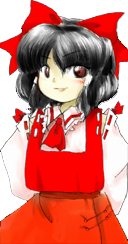
As we can see, Reimu has the reddest cheeks which is inconsistent with Sakuya and Patchouli having mercury poisoning. However, an interesting connection is that Reimu wears mostly red, and considering it is traditional to paint the Torii gates of shrines vermilion to ward off evil, it is actually more possible than I initially thought that she could have mercury poisoning as well.
Some might object that Patchouli Knowledge, being a youkai mage, might be immune to toxins. Considering how wizards are stated to often have weak bodies due to interaction with dangerous substances, I find this unlikely. One might argue something similar for Sakuya because of her time manipulation, but we only see her use time manipulation consciously, so we aren't sure. The main question would be whether the process that slows her aging also negates most of her bodily functions, so I guess this would depend on whether we see her eat and breath, and since she gets tired from hypoxia in Touhou 18 she must be breathing and is probably susceptible to poison as well.
The main problems I can think with this theory of are with the fairy maids having heavy metal poisoning as well, which was not the main subject. It's been explained that Remilia goes for quantity over quality for her staff, and Sakuya presumably hires anyone with the most basic of skills. However, it could be possible that Remilia goes for quantity over quality because they all end up low quality due to their poisoning. Given that fairies are used to playing and pulling pranks they are probably unsuited to hard work. The reasoning that they might still be affected by poison is rather weak since much of it relies on a single remark from Sanae, who might be wrong. I still found it interesting to consider.
91 notes
·
View notes
Text
Technoblade assigned rocks/minerals based on vibes only:
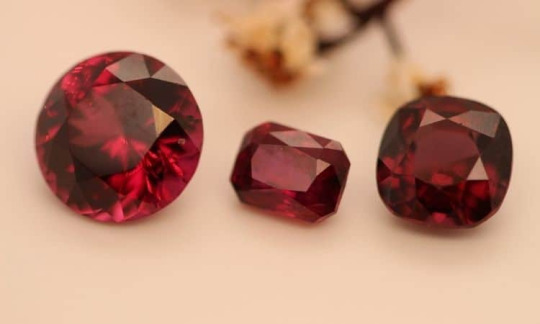
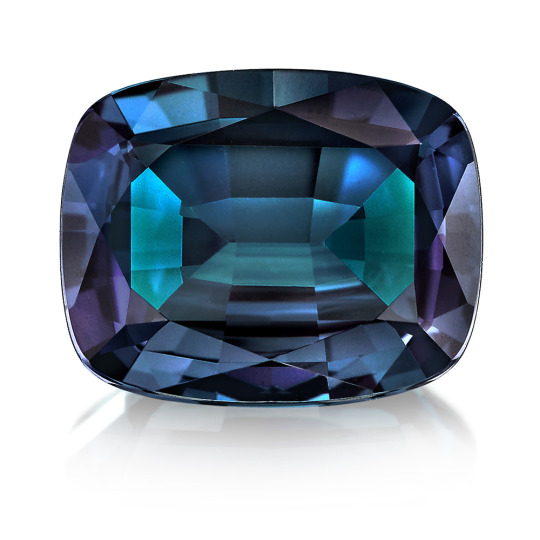



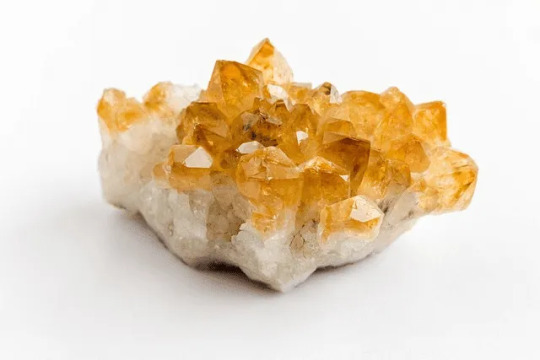
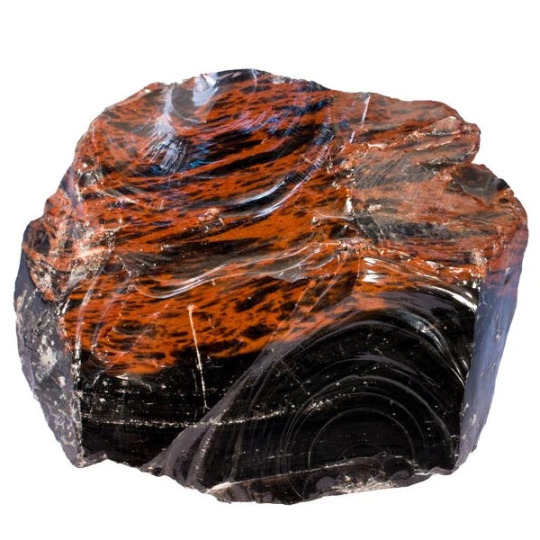
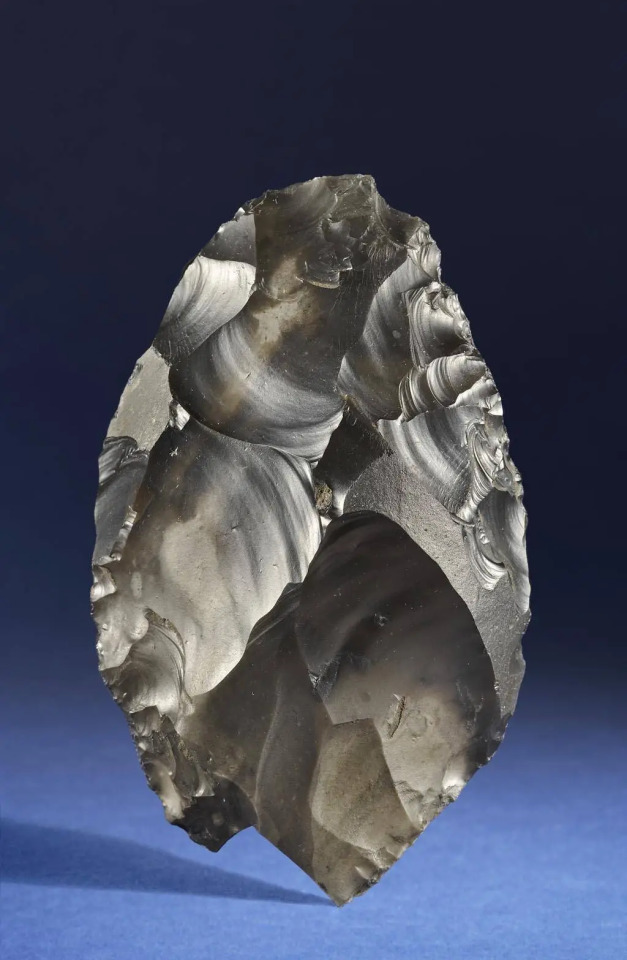
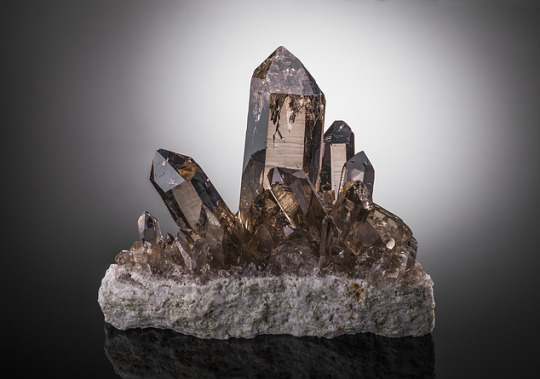

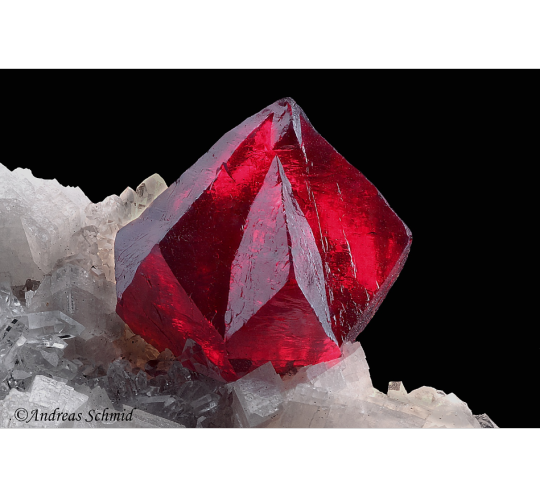
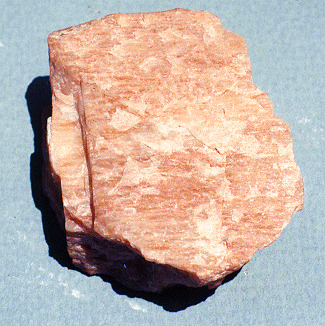

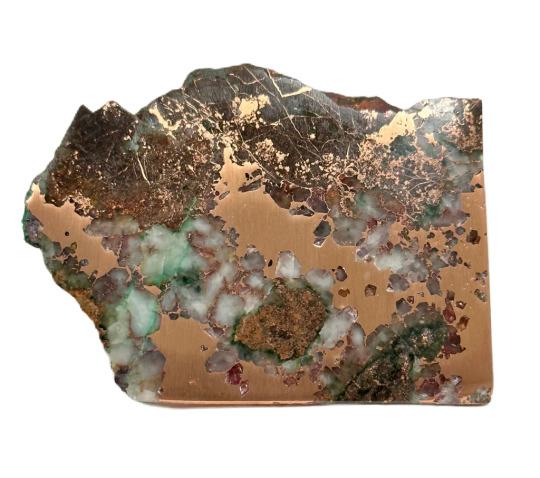

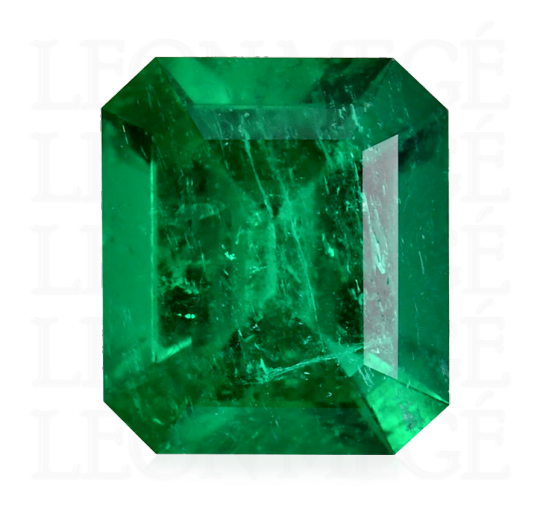


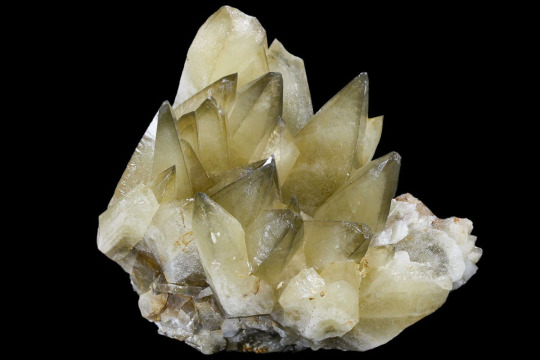
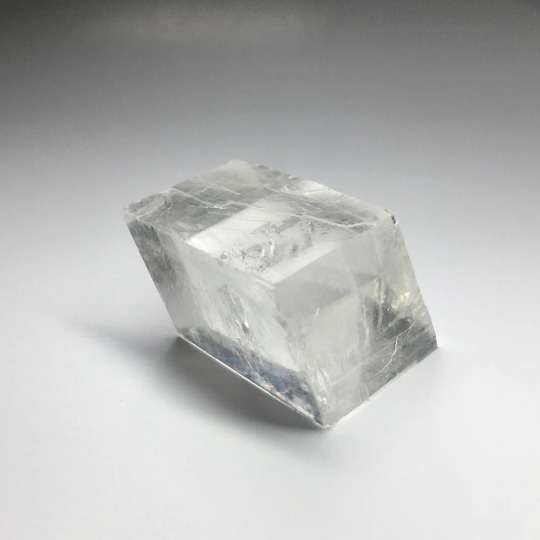
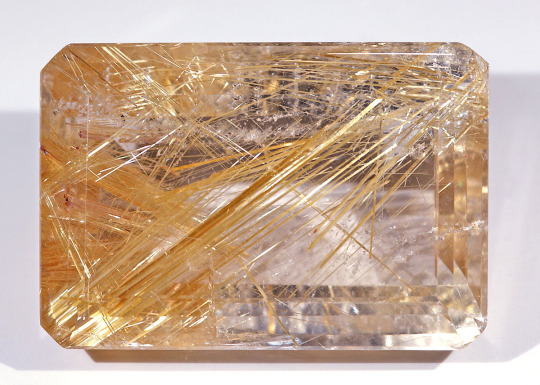
(list below the cut)
Rubies, garnets, alexandrite
Ruby in zoisite
Amber, Honey calcite, citrine
Mahogany obsidian
Flint/chert
Smoky quartz, rose quartz
Cinnabar
Feldspar (especially k-feldspar)
Fire opal
Copper and gold
Emerald
Aragonite
bloodstone
Calcite (especially dogtooth and Icelandic spar)
Golden rutile quartz
Image Sources: 1, 2, 3, 4, 5, 6, 7, 8, 9, 10, 11, 12, 13, 14, 15, 16, 17, 18, 19, 20, 21
40 notes
·
View notes
Note
Hello! I love your blog bc it helps me a lot with writing and crafting. Thank you so much for making it!
Are there any patterns that deal with poison? Either in the pattern or in the dyeing process?
Even if there's not I'm glad you and this blog exist 💗
(anon continues) Poison in the dyeing process, like when green dresses were dyed with copper arsenite and it was extremely deadly.
Or a pattern of someone being poisoned, like a historical/folktale.
_______________________________________
Thank you for your kind words <3 I tried to keep things organized but the subject is huge so my of the top of my head answer is going in many directions. I hope you'll still find what you need :3
I'll briefly cover here dyes and (pigments), poison motifs, real life and supernatural poisonings. Buckle up we've got a long post ahead!
____ ABOUT DYE
Tbh I had to think for a moment because I don't recall major "poison" stories linked to dyes in Japan, be it fictionous or real (yet that doesn't mean none ever happened, especially considering Japan's history of industrial poisonings...).
Most gruesome details in the fabric industries I know of are about the horrific life & work conditions of female laborers in spinning mill manufactures (as in many countries, Japan industrialization process was ghastly...).
If potters and dyers had excellent practical knowledge, chemistry as a science officially started kind of late in Japan as it was not a local interest, and as rangaku (study of Western knowledge) often favored other subjects like medicine or warfare.
So, until the introduction of aniline dyes (not textile related, but this article about the use of synthetic dyes in ukiyoe printing is super interesting), Japanese worked with "natural" dyes, like ai (indigo) which was the most used during Edo period.
As with any ingredient, being natural doesn't equal safety. Some mixtures could be quite potent/foul, and process could be dangerous. Plants and minerals base ingredients could be toxic (cinnabar and orpiments were then used as paint pigments, and lead could be found in make up), as were mordants used to set colors.
If you want to easily overview which ingredients were used to create colors, I recommand browsing [Irocore] which presents colors with explanation in English in their database (pick a color then scroll down).
Not related to poison, but ai (indigo) is traditionally prepared in aigame/enormous floor set jars I find utterly terrifying:
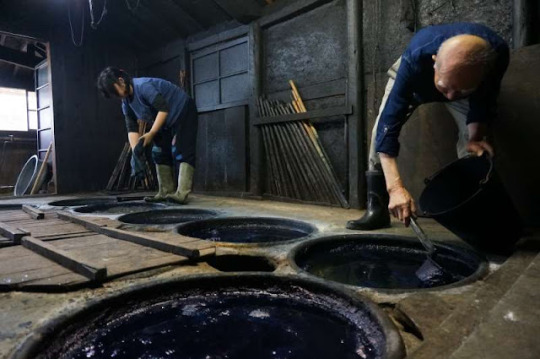
I don't know if this tidbit can help you, but some dyes and mordants actually damage the fabric overtime, leaving them brittle (silk desintegrates after a while which is a huge issue in textile conservation).
____ POISON MOTIFS
Concerning "poison" themed patterns, none would be actually used traditionally on a kimono or an obi beside novelty items ^^;
For example, many plants can be toxic, but I don't see them set as pattern for this property - they'd rather refer to a poem, be a symbol of the passing of seasons etc. Fuji (wisteria) can be quite harmful, yet it's a beloved traditional motif in Japan.
You have much more chances to find pattern with kujaku (peacock) which are thought to be impervious to poison in Buddhism, than say venomous mukade (centipede) or the horrific ômukade (a youkai I covered in a folktale).
Snakes like the habu and mamushi are dangerous, but if used as pattern snakes are most often auspicious and linked to rain dragons or goddess Benzaiten.
If you squint hard, toxic fugu could count as poison pattern, but such a seasonal delicacy as a motif would mostly underline wealth (as those fishes are pretty expensive as they are prepared by specialized chefs), a kind of carpe diem spirit, or just a fun pattern because fugu balloon shape is cute ;)
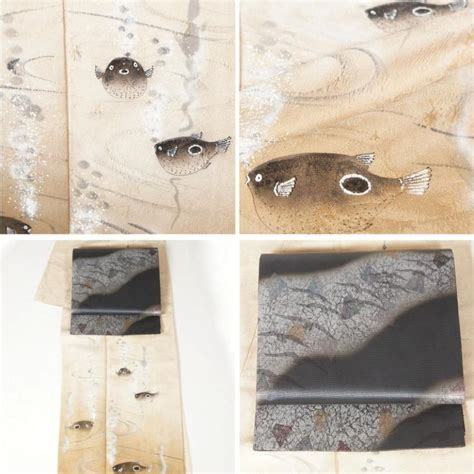
____ POISON MURDERS
Poisoning was certainly a thing is Japan since ancient times (see kodoku sorcery). Poisons were for example used in some fishing techniques.
I am pretty sure some kuge and buke were disposed of this way - even thought poison was seen as a coward weapon (hence why its supposed to be only used by shinobi/ninja - even if this "fact" is opened to a lot of discussions!).
During Edo period, such murders made up the news and penny dreadful-like illustrated books favored by city dwellers in need of a fright. But those stories didn't pass to posterity beside cheap ukiyoe plates, and were never as popular as some shinjû (double suicides) or ghost revenges like poor poisoned and murdered Oiwa's:
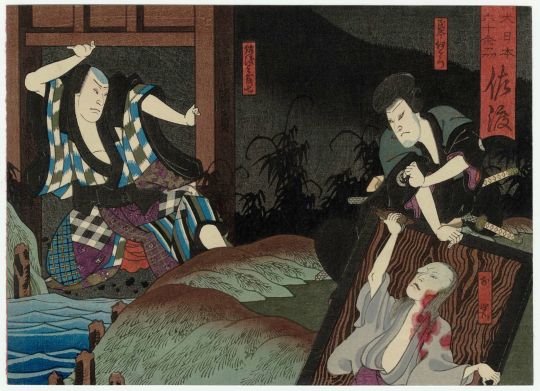
____ SUPERNATURAL POISONINGS
If your poison is both physical and metaphorical illbeing, mushi could be your guys ^^ This term actually covers everything small and crawling, from real worms and insects, to anything inside one's body causing distress - be it a parasite, an unknown illness, an overboard emotion, a curse etc. If you've read/seen Mushishi you've got what I mean:
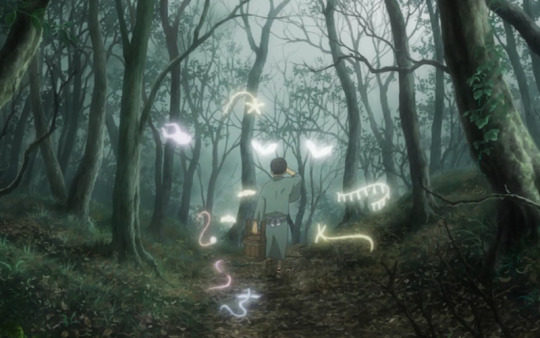
In fact any illness-causing being could count as poison-bringer. Hôsôkami (smallpox demon) was truly feared by all before vaccination was introduced in Japan.
Finally, continuing the supernatural poisoning trail, best girl is probably legendary fox witch Tamamo no Mae who among other terrible deeds made emperor Konoe fall sick with poisonous miasma (some version of the story attributes the disease to another monster, the nue). I covered a similar murderous kitsune folktale here.
#ask#japan#japanese history#dye#pattern#motif#poison#venomous#illness#natural dye#aniline dye#mordant#pigment#kujaku#peacock#mukade#centipede#omukade#youkai#snake#hebi#mamushi#habu#benzaiten#fugu#mushi#insect#mushishi#Hôsôkami#smallpox demon
116 notes
·
View notes
Photo
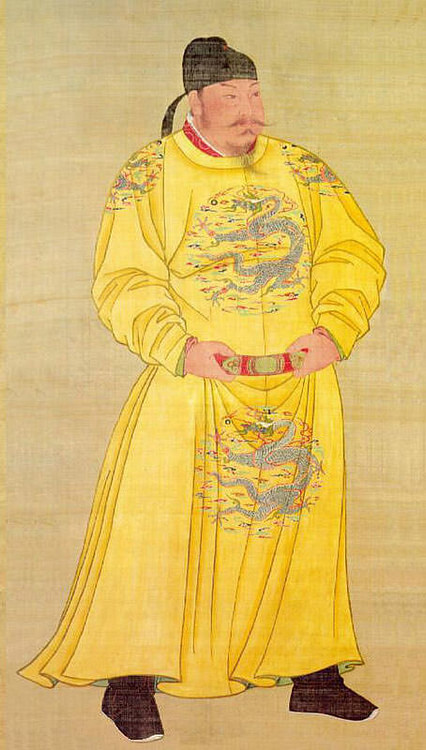
Silk in Antiquity
Silk is a fabric first produced in Neolithic China from the filaments of the cocoon of the silk worm. It became a staple source of income for small farmers and, as weaving techniques improved, the reputation of Chinese silk spread so that it became highly desired across the empires of the ancient world. As China's most important export for much of its history, the material gave its name to the great trading network the Silk Road, which connected East Asia to Europe, India, and Africa. Not only used to make fine clothes, silk was used for fans, wall hangings, banners, and as a popular alternative to paper for writers and artists.
Origins & Cultivation
Silk is produced by silk worms (Bombyx mori) to form the cocoon within which the larvae develop. A single specimen is capable of producing a 0.025 mm thick thread over 900 metres (3,000 ft) long. Several such filaments are then twisted together to make a thread thick enough to be used to weave material. Fabrics were created using looms, and treadle-operated versions appear in, for example, the murals in tombs of the Han dynasty (206 BCE - 220 CE). The silk could be dyed and painted using such minerals and natural materials as cinnabar, red ochre, powdered silver, powdered clam shells, and indigo and other inks extracted from vegetable matter.
Sericulture - that is the cultivation of mulberry leaves, the tending of silkworms, the gathering of threads from their cocoons and the weaving of silk - first appears in the archaeological record of ancient China c. 3600 BCE. Excavations at Hemudu in Zhejiang province have revealed Neolithic tools for weaving and silk gauze. The earliest known examples of woven silk date to c. 2700 BCE and come from the site of Qianshanyang, also in Zhejiang. Recent archaeological evidence suggests that the Indus Valley civilization in the north of the Indian subcontinent was also making silk contemporary with the Neolithic Chinese. They used the Antheraea moth to produce silk threads for weaving.
However, silk production on a large scale and involving more sophisticated weaving techniques would only appear from the Chinese Shang and Zhou dynasties in the 2nd millennium BCE. Silk then became one of the most important manufactured and traded goods in ancient China, and finds of Shang dynasty (c. 1600 - 1046 BCE) silk in an Egyptian tomb are testimony to its esteemed value and use in early international trade.
Continue reading...
31 notes
·
View notes
Note
headmate based off the holiday Valentine’s Day? Make the xenogender and neopronouns COMPLETELY unrelated! Also, give them a typing quirk if you wanna!!!
✦•······················•✦•······················•✦
❝╰ Name(s) ⊹ : Amanda, Amora, Marian, Mary, Lavi, Latte, Cinnamon, Cinnaba (from the mineral Cinnabar), Darling, Kyuu (from the Japanese pronunciation of Cupid), Parfait
╮✧ Gender(s) ⊹ : Cinnaromic, Pluvialgender, Autumgender, Blackberrian, Crystalic, Luminyx
⊹╰ Pronouns ⊹ : zey/zem (preferred), she/her, they/them, sy/skyself, crys/crystself, dia/dialself, rayne/rayneself, rain/rainself (secondary preferred), light/lightself, nya/nyaself, glow/glowself
╮ ᶻz Sexuality ⊹ : Abrosexual, Aceflux, Panromantic, Ambiamorous, Panqueerplatonic
✦ . ⁺ . ✦ . ⁺ . ✦
❝╰ Age ⊹ : 19
╮ ✧ Role(s) ⊹ : Comforter, Delight, Intermediary, Moderator, Peacemaker, Matchmaker, Playmate
⊹╰ Likes ⊹ : Roses, sunshine, spring and autumn, cute things, Decora fashion, magical girls, desserts, love and love/romance related things, candy, butterflies, stories with a lot of lore/worldbuilding, fantasy stories, writing, drawing, DIY (specifically papercrafts), astrology + astronomy, physical touch (cuddles, sweet kisses, etc), rainy days, gemstones and shiny rock collecting, fruit
╮ ᶻz Dislikes ⊹ : Not being taken seriously, most bugs, making hard to keep promises, thunder, excessive heat (90°F and above)
✦ . ⁺ . ✦ . ⁺ . ✦
❝╰ Personality ⊹ : A very upbeat, easy to befriend person. Zey're very cheerful a lot of the time, and love to spread zeir joy to rains headmates. Zey're very loyal, but also strong willed, and won't hesitate to call someone out for their behavior. Outgoing and talkative, especially about things rains passionate about. A hopeless romantic, often pondering about things like love and romance. Rain is wonderful with littles/syskids and similarly energetic headmates, easily keeping up with their childlike enthusiasm with a smile on zeir face. Zey always have the system's best interests in mind, coming to aid zeir system in times of need. Call zeir name, and zey'll be right there to help !
╮ ✧ How they type ⊹ : Typing Quirk: replaces "s" with "z", uses kaomojis a lot, puts spaces before exclamation marks and question marks.
"hello there !! iz there anyzing you need ? ^^" / "there'z thiz book i'm reading, wanna hear a piece of it ? ^.^" / "butterfliez are zo beautiful… zometimez i wizh i waz one.." / "awwh, that'z adorable !! ><"
[tq translation: "hello there!! is there anything you need? ^^" / "there's this book i'm reading, wanna hear a piece of it? ^.^" / "butterflies are so beautiful… sometimes i wish i was one.." / "awwh, that's adorable!! ><"]
⊹╰ Other Info ⊹ : Zeir main aesthetics are Lovecore and Candycore
╮ ᶻz Face Claim(s) ⊹ :

(link to picrew)

(link to picrew)
✦•······················•✦•······················•✦
sorry for taking awhile ! orz -- this was a fun one to do ^^ hopefully the neos and xenogenders are unrelated enough lol
have a great day !
#bah blog#build a alter#build a headmate#created headmate#headmate creation#headmate pack#headmate package#alter creation#build an alter#mod huno🔮#nwbah completed reqs#mod mitch🥞#anti rq#anti radqueer#radqueers fuck off
12 notes
·
View notes
Note
i kinda gave cinnabar a new color palette and slight redesign, i hope it doesn’t look too bad and it’s alright with you . .

( the gray streak of hair is both from stress, and a reference to how the actual mineral of cinnabar contains a mercury, which is gray as well ! )
APRI!! SHE’S GORGEOUS, I LOVE THE TWEAKS YOU MADE! The gray streak being connected to her name is so smart and her red eyelashes have captivated me. Of course it doesn’t look bad, and you certainly don’t need anyone’s approval but your own for character design <3 I’m just here cheering and giggling and kicking my feet over your OCs no matter what
#cas being like “yk I didn’t want kids but at least they got my good looks LMAO”#alnst oc#alien stage oc#alien stage#alnst#alnst ocs#alnst oc: cinnabar
11 notes
·
View notes
Text


Next mineral group mapping: SULFIDES AND SULFOSALTS
P.S., I'm aware that a black canvas with dots on it isn't all too helpful, so I'll be including a copy of the topographic map on these as well so you can see where these are...
SULFIDES
Pyrite - FeS2 - (Dark Gold)
Chalcopyrite - CuFeS2 - (Darker Brown-Gold)
Galena - PbS - (Light Steel Blue)
Sphalerite - ZnS - (Light/Faded Green-Blue)
Cinnabar - HgS - (Cinnabar-Burgundy Red)
Molybdenite - MoS2 - (Light/Faded Lilac-Gray)
HIGHER ARSENIDES
Arsenopyrite - FeAsS - (Brownish-Orange)
Skutterudite - (Ni,Co,Fe)As3 - (Cobalt Blue)
SULFOSALTS
Polybasite - (Ag,Cu)16Sb22S11 - (Grey-Camo Green)
Stephanite - Ag5SbS4 - (Dark Amythest-Grey)
Tetrahedrite - Cu12Sb4S13 - (Greenish-Lemon Yellow)
Pyrargyrite - Ag3SbS3 - (Dark Crimson)
More mineral groups coming up ! I've got ~105 to map!
#art#digital art#artists on tumblr#worldbuilding#jomgol#spec bio#spec evo#speculative biology#speculative evolution#mapmaking#fantasy map#fantasy maps#maps#minerals#geology
12 notes
·
View notes
Text

Archaeologists Discover 1,500-Year-Old Tomb of Ancient Emperor in China
An inscription on the 1,400-year-old tomb shows the dead man, who was posthumously declared emperor, was buried as a duke.
The 1,400-year-old tomb of a Chinese emperor confirms a political power struggle between royal brothers and a warlord that, until now, was known only from historical records.
The official Chinese news agency Xinhua reported last week that archaeologists had unearthed the tomb near the city of Xianyang in Shaanxi province, about 560 miles (900 kilometers) southwest of Beijing.
The report said the tomb holds the remains of Emperor Xiaomin — also known by his personal name, Yuwen Jue — who is regarded as the founder of the Northern Zhou dynasty in 557. But historians say Jue was deposed and executed after ruling for only a few months and that he wasn't proclaimed emperor until decades later.

The newfound tomb near Xianyang is inscribed with an epitaph, written in characters painted with cinnabar, a red mineral form of mercuric sulfide. It describes Jue as "Duke of Lueyang," which was his official rank at the time of his death, and not as emperor.
According to the Shaanxi Academy of Archaeology, which is working on the excavations, the tomb was found in an area northwest of Xianyang that has many high-status tombs from that time.
A tomb belonging to Jue's younger brother was previously found nearby, while the tomb of yet another brother, Yuwen Yong — Emperor Wu of the Northern Zhou — is about 5 miles (8 km) to the east.
The newfound tomb is a single earthen chamber about 184 feet (56 meters) long and about 33 feet (10 m) deep.

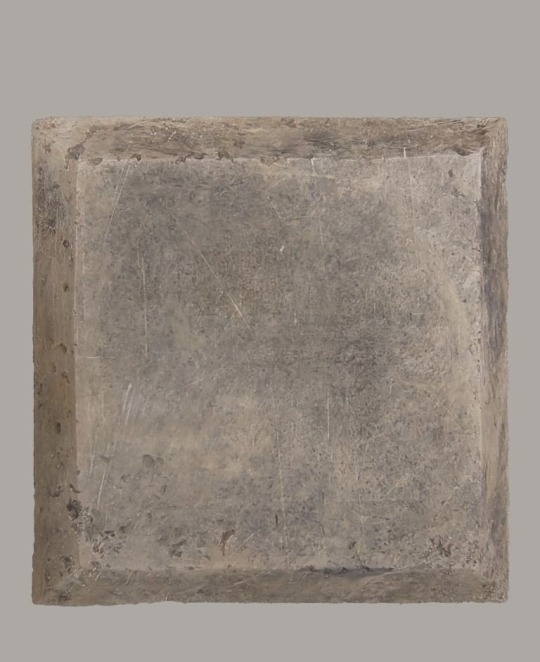
At some point, the tomb was disturbed by grave robbers, but the archaeologists unearthed 146 artifacts buried there as grave goods, including terra-cotta figurines and pottery, according to Xinhua.
Experts say the inscription on the tomb provides the first physical evidence of the political struggle that took place during the founding of the Northern Zhou dynasty, which had been described only in historical writings.
At that time, China was fractured into several kingdoms plagued by civil wars and political chaos — a period historians call the time of the Northern and Southern dynasties, between 420 and 589.
Historian Albert Dien, a professor emeritus of Chinese at Stanford University who was not involved with the tomb's discovery, told Live Science that Jue had been installed on the imperial throne by his cousin and guardian, the warlord Yuwen Hu.
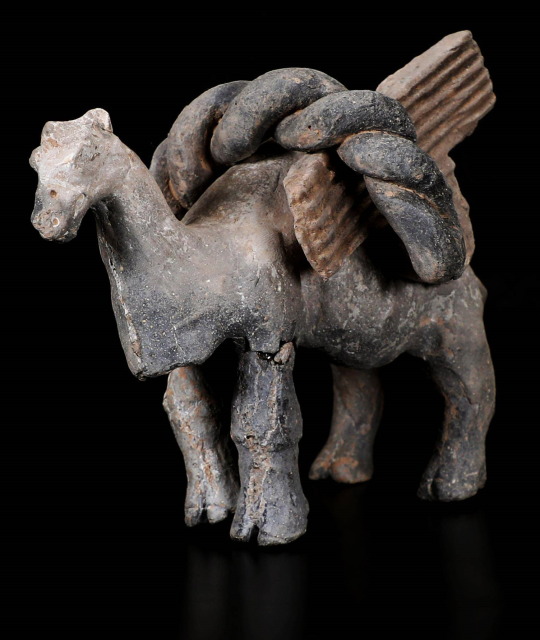


Jue was the son of Yuwen Tai, a powerful general of the Western Wei dynasty who died in 556, and with Hu's support, Jue ascended the throne in 557.
But Jue rebelled against control by Hu, so Hu had him deposed and executed a few months later, replacing him with another brother, Yuwen Yu — Emperor Ming.
Hu eventually poisoned Yu, and then controlled the Northern Zhou dynasty through puppet rulers until he was assassinated in 572 by a clique loyal to yet another brother, Yuwen Yong, who had become Emperor Wu.
Jue was proclaimed the first emperor of the Northern Zhao dynasty only after Yong dispatched Hu, roughly 37 years after Jue's death, Dien said. As a result, the inscription on the newfound tomb near Xianyang shows Jue had been buried as a duke when he died, and not as an emperor.
By Tom Metcalfe.
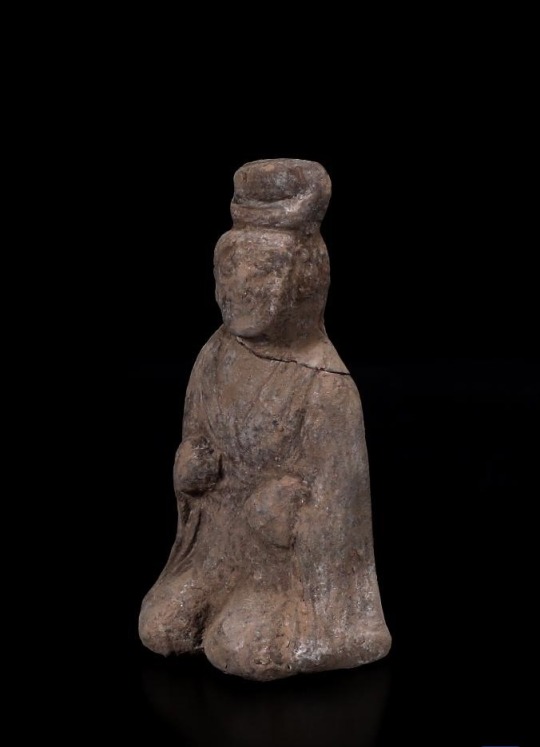


#Archaeologists Discover 1500-Year-Old Tomb of Ancient Emperor in China#Emperor Xiaomin#Yuwen Jue#Northern Zhou dynasty#ancient artifacts#archeology#archeolgst#history#history news#ancient history#ancient culture#ancient civilizations#ancient china#chinese history#chinese emperor#chinese art
49 notes
·
View notes